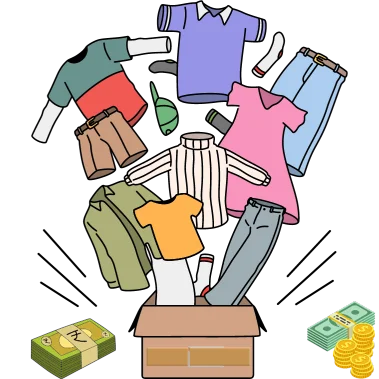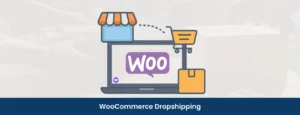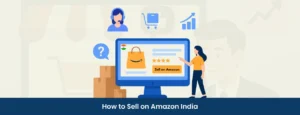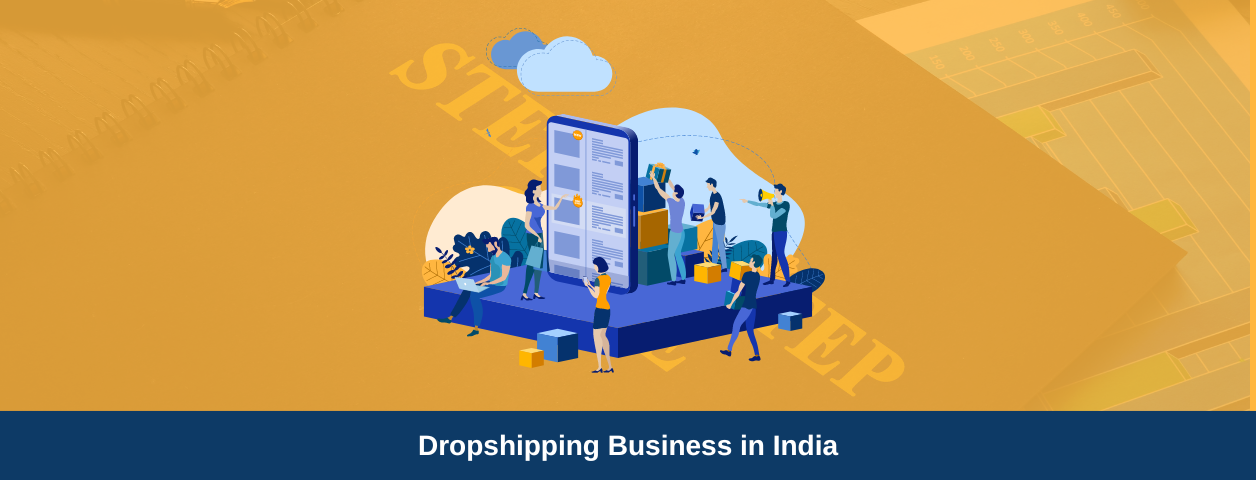Starting a Print on Demand (POD) business is an exciting and accessible way to launch your brand with minimal upfront investment. Unlike traditional inventory-based businesses, the print on demand model allows you to sell custom-printed T-shirts and other products without holding stock or handling fulfilment.
The only costs you will be spending are in creating your store, designing your products, marketing, and paying your print on demand partner when your customer places an order. Despite the reduced financial risk, there are other real expenses to consider while launching your print on demand store.
From platform fees to marketing budgets, understanding the actual cost of print on demand helps you plan your business wisely for your future goals. This blog will break down all the key expenses, from getting started to ongoing costs, so that you can launch a successful print on demand brand.
Key Takeaways:
- Print on Demand (POD) allows you to start with very low inventory risk, yet you need a budget for the platform, designs, marketing, and other setup costs.
- Building your brand on marketplaces like Amazon or Etsy requires low or no upfront investment, but limits control and profit margins.
- In India, starting a small-scale print on demand business may cost around ₹10,000, depending on the costs of the platform and marketing.
- Partnering with a reliable print on demand fulfilment provider, like Qikink, helps you avoid inventory & other overheads.
How much does Print on Demand Cost?

Print on demand removes many burdens for the sellers, including inventory and manufacturing, but it is not a completely zero-investment business. As a brand, you need a realistic view of the costs involved to launch, operate, and grow sustainably. Below is a detailed breakdown of the key costs you should expect when starting your print on demand business.
1. Marketplaces Costs
Print on demand cost to sell on the marketplaces like Amazon, Etsy, or eBay are one of the simplest, easiest and cost-effective ways to start your print on demand business. These platforms offer built-in audiences and remove the need to manage your own website upfront.
But while listing products is often free or very cheap, each marketplace charges fees that affect your profits. Let’s break down the main costs you’ll encounter on these leading marketplaces:
Amazon:
Amazon’s Seller Central lets you tap into millions of active shoppers, making it tempting for POD sellers. You can sell print on demand products on Amazon directly here once your designs are ready. There’s no monthly fee for individual sellers, yet you’ll have to pay referral fees between 8% and 15% per item sold, depending on the product category.
For example, selling a hoodie for ₹2200 on Amazon, the platform takes a fee of around ₹200 to ₹350 from that sale before you pay your print on demand costs. For professional sellers with larger volumes, Amazon charges around ₹3500 ($39.99) for a monthly subscription, which lessens the per-sale fee.
Etsy:
The Etsy platform is popular for handcrafted and unique items, including print on demand goods. It charges around ₹18 listing fee per item and transaction fees of 6.5% on the sale price. Payment processing fees can vary by region or country.
Selling on Etsy is feasible because its upfront listing fees are low, but if you list many products, costs might add up accordingly. The platform has a community of buyers who are actively looking for custom products, which can lead to good sales for good designs.
eBay:
eBay’s fees are a bit more complex, where some sellers enjoy a few free listings monthly, and most of them have to pay an insertion fee. The eBay platform primarily charges a seller fee of around 10% to 13.6% of the product’s final value.
Selling print on demand products on eBay offers access to millions of shoppers but requires more self-promotion. Shipping settings and return policies need careful configuration, as eBay buyers expect a smooth service.
Marketplaces can help you start with less investment in your initial stages, but ongoing commissions reduce your long-term profit margin.
2. Website and eCommerce Platform Costs
While marketplaces like Amazon and Etsy take care of selling your designs, you don’t get complete control over those platforms. Having your own eCommerce site gives you full ownership of your brand, customer data, and experience. But running your own store also comes with upfront and ongoing costs.
Hosting and Platform Fees:
Most print on demand brands build their stores on user-friendly eCommerce platforms that provide hosting, security, payment integration, and customizable design templates. Some popular eCommerce platforms are Shopify, WooCommerce, and other platforms that offer various features at different prices.
Among them, Shopify stands out as the leader of the platforms, providing the most efficient pricing plans and an easy-to-use platform. Shopify’s pricing plan offers diversified features for beginners to pro users. The plans are:
|
Shopify Plans
|
Monthly Fee
|
Key Features
|
|---|---|---|
|
Basic Shopify
|
₹2,570 ($29)
|
Core store features, unlimited products, and two staff accounts.
|
|
Shopify (Standard Plan)
|
₹7,000 ($79)
|
Gift cards, professional reports, and five staff accounts.
|
|
Advanced Shopify
|
₹26,500 ($299)
|
Advanced reporting, 15 staff accounts, and lower transaction fees.
|
|
Shopify Plus
|
Custom pricing, up to ₹1,75,000 ($2000) a month.
|
Fully customizable checkout, B2B selling tools, unlimited staff accounts and other core features.
|
For beginners to begin their Shopify print on demand, in India, the platform costs only ₹20 per month for their first three months of selling, which will be helpful in scaling their business at the beginning, and they can go further with other plans while growing consistently.
Domain Name:
A domain name is what provides the brand identity for every professional store. Shopify also sells domains starting at ₹1,240 ($14) per year, but you can also think about a second option by choosing sites like Namecheap to buy a domain, paying around ₹700 ($8) annually.
Connecting your domain to Shopify is simple and helps build brand identity and trust. Also, when you have Qikink as your print on demand partner, you can use their integrations and connect your store with Shopify and other eCommerce platforms, too. Additionally,
- Shopify offers many premium themes to use as your dashboard for a unique look to your store, which are priced from ₹8,800 to ₹15,900 ($100 to $180) as a one-time purchase.
- There are also many add-ons for marketing tools, along with email and social plugins, which cost around ₹440-₹4,400 ($5-$50) per month.
3. Logo, Mockups, and Design Tools Costs
Creating a distinctive brand and attractive product presentation requires investment not only in buying premium themes but also in a high-quality brand logo, mockups and good design tools. Here is the detailed comparison of the costs involved in these essential elements:
Brand Logo Design:
A memorable logo builds trust and sets your brand apart in this competitive market. To create a professional logo, you can,
- Do it Yourself (DIY): With tools like Canva, you can make simple logos for free, but a lack of design skills can affect the professionalism and quality.
- Hire a Freelancer: The most popular print on demand sellers hire their designers from sites like Fiverr, and you will be required to pay your designer a commission of a minimum of ₹2000 for making a professional logo and other designs.
Instead of relying on a third-party agency for logo making, hiring a freelancer from Fiverr provides you with the best designs to feature in your store.
Product Mockups:
In this technology-filled world, visual merchandising through mockups attracts customers and easily gains a buy.
- Some print on demand platforms provide free basic mockups, but often lack variety and customisation.
- The primary choice tool for product mockups, which you can consider, is Placeit. This platform also offers an unlimited download subscription for around ₹1,300 ($14.95) per month.
- You can also use freelancers from Fiverr for mockup designs, but they will expect more commissions with respect to the complexity of the design.
Tools for Custom Designs:
- From the various design software, you can leverage free tools like Canva (basic plan), GIMP design elements, and other similar tools, especially for beginners.
- There are professional paid tools like Adobe Illustrator costing more than ₹2,000 ($23) per month, and Adobe Photoshop pricing around ₹1,850 ($21) per month.
- Some web-based AI design tools, like Kittl and Figma, are priced around ₹1400 ($13) monthly for the tools, uploading space and other expertise.
Using professional tools or hiring experts can save time and improve design quality and professionalism, but plan your costs and budget for your business accordingly.
4. Sample Product Costs
Before you list your designs for sale, understanding the product sample cost is essential. Samples allow you to,
- Check print and colour quality, along with design alignment.
- Assess material comfort and durability to withstand seasons.
- Photograph those sample products for your store and marketing.
- Ensure packaging and shipping quality.
Ordering sample products adds up to a small upfront investment, but helps protect your brand.
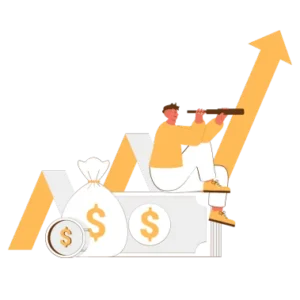
Print On Demand Cost Breakdown: Essential Expenses

Even though print on demand removes the burden of most of the expensive things, there are still a few necessary expenses to run the business smoothly. From the detailed cost segregation, here’s a simplified breakdown of how much does print on demand cost:
One-time Expenses
- Domain and Website Setup: Buying a domain costs around ₹1000 per year.
- Shopify Store Setup: Choosing the Shopify annual plan, the cost is around ₹2,570 per month. For new sellers from India, Shopify charges only ₹20 per month for the first three months for basic sellers.
- Logo for Branding: Leverage a minimum price of ₹1000 for a perfect professional logo.
Monthly Expenses
- Design Tool Subscriptions: Tools like Canva Pro or Adobe Photoshop require a monthly or yearly subscription, costing only ₹6000 per year.
- Ads Marketing: Spending on marketing is advisable only after crossing the beginner levels, which could start from ₹4000/month.
- Email Marketing and Other Tools: For effective email marketing to retain a customer and for other add-ons from the platforms, it might cost only ₹1000 per month.
Hidden or Optional Expenses
- Premium Themed Stores: For a professional-looking store, you can purchase the premium themes in platforms like Shopify, which range from ₹3,000 to ₹8,500.
- Freelance Designers: A professional designer from Fiverr might expect a commission of ₹1000 for every basic design, which could add up as an additional expense.
- Others: Optional expenses like sample orders, and for faster delivery or international shipping, other taxes, and any other upgrades would take up an effective percentage of the cost of the budget.
Planning your print on demand business, keeping these costs in your budget plan will help you run a profitable business.
Marketing Budget for Print On Demand
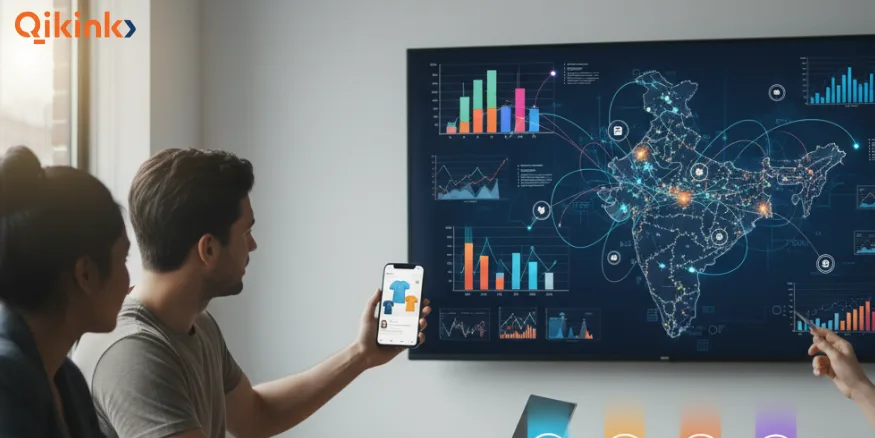
Marketing is the ultimate step in every business to drive traffic to your store and convert it into a purchase. But adding marketing to your budget would be best when your brand has attained a sensible growth.
So try driving organic market traffic to your store, without spending and boosting on ads, and later, when your business has scaled up to a level, you can consider spending on marketing, which should be planned according to the budget.
SEO (Search Engine Optimisation)
SEO builds trust and brings consistent traffic that compounds over time. This is mostly free but requires time and consistency. Optimise your product descriptions, blog content, and website structure for search engines like Google to attract organic traffic. You can also share your product on social media or collaborate with any writers and add them as backlinks to their blogs.
Social Marketing
Using social media for your business and building your presence on platforms like Instagram and Facebook can be cost-effective. Selling on Instagram with engaging content and driving traffic organically grows your audience community.
For apparel and other lifestyle print on demand products, Instagram and Facebook are the top tools. Using Pinterest can be effective for finding international customers. Posting behind-the-scenes of making and review pictures from customers can gain more attention for your store.
Paid Advertising
Every print on demand seller enters into paid ads only after growing their business to a certain level. If you want to scale quickly instead of waiting for organic traffic, you can plan your budget for paying for ads. Meta ads like Facebook and Instagram, and Google Ads are the popular choices to reach targeted customers.
As a rough estimate, you will be required to spend around ₹500 to ₹1,000 per day to scale your business faster. But if you are paying for ads to create traffic, make sure your design is already a proven product, so your money on ads will be cost-effective for a profit.
Starting with a small ad budget and adjusting based on performance can maximise returns. Combine paid ads with SEO and organic social efforts for sustainable growth in this business.
Print on Demand Budget Level Costs
There are many minimal expenses to be covered when starting a print on demand business, as scaling a business comes with varying costs depending on budget and your growth plan. Here’s a quick look at the cost range of different budget levels of different sellers:
|
Budget Level
|
Cost Range
|
Key Expenses Covered
|
|---|---|---|
|
Low-budget Start
|
₹9,000 - ₹13,000
|
Marketplace fees, free design tools, minimal ads.
|
|
Moderate Start
|
₹17,000 - ₹44,000
|
Own site, logo, mockups, paid ads & design tools.
|
|
Scaling Start
|
₹53,500 - ₹88,500 or more
|
Professional branding, strong marketing, and a support team.
|
These costs cover essential costs like platform fees, designs, and marketing for print on demand, ensuring you can plan your budget efficiently and scale your business sustainably.
How to Start a Print on Demand Business in India (Complete Guide)
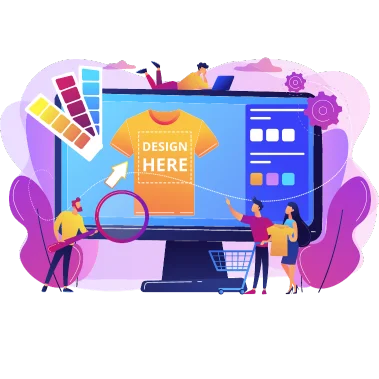
How to Start a Print On Demand Business?
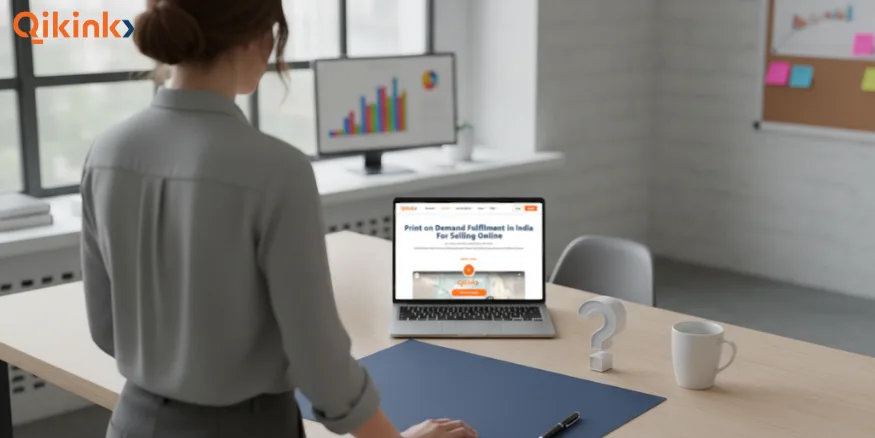
Print on demand business is the best cost-efficient model for every aspiring entrepreneur to enter into the eCommerce industry with minimum risk. But like any business, success requires clarity, planning and understanding the costs and the steps involved. Here are some practical steps to launch your own print on demand brand:
1. Choose Your Niche
A niche gives your brand identity and helps reduce marketing costs. Identify your niche that resonates with your target audience, either a cultural quote apparel or a couple-gift accessories. This will give you the first clarity of launching a brand.
2. Select Your Product
There are numerous print on demand products to choose from to sell through your platform or store. There are some best-selling products like:
And more to add to the list. So define your product with which your design will look perfect. The product choice will also play an important role in the costs involved.
3. Create Your Design
After you have chosen the product type, you will be required to make your own design, which should be legally verified with no copyrighted content. You can either create your own high-quality design with plenty of design tools and software available or hire a freelance designer to work on your designs.
4. Pick Your Platform
Now, you will need a platform or a site to sell your designs. At this stage, you can either join any of the best print on demand platforms available in the marketplace or launch your own store and take complete control of your business.
Your print on demand partner will handle printing, packing, and shipping once your customer places an order. India’s best fulfilment service, Qikink, has helped over 18,000 entrepreneurs to launch their own brand with no hassle for stock and logistics for their sellers.
5. Market Your Store
Perform design and product testing to identify your place in the market and start small to scale big later. When you launch, it is just the beginning of your business. You need to gain market traffic by advertising your store.
You can use your social media for your business, for gaining organic traffic, and later, when your store grows exponentially, ads can be boosted for more visibility.
Remember, building a print on demand brand is a step-by-step process, and success doesn’t knock on the door the next minute after you sell one design. Setting up your platform perfectly and working forward with consistency and hard work will lead you to the right path in this business.
Print on Demand Cost in India
The cost structure of a print on demand in India is slightly different from that of major countries like the US and Europe. The biggest advantage is lower product and shipping costs, which makes it easier to maintain margins even at competitive price points. Some cost insights of print on demand India are:
- Apparel, accessories, and merchandise generally cost less to produce in India, allowing better profit margins for regional sellers.
- Logistics and courier charges are relatively lower, reducing the total fulfilment costs.
- Amazon and other similar platforms charge referral fees, which slightly reduce margins compared to selling via your own website.
- With Qikink, as your regional fulfilment partner, you don’t have to worry about stock, bulk investment, and machinery costs, which allows you to start today while growing your brand identity profitably.
How Qikink Helps Reduce POD Costs in India

Qikink enables new and growing sellers to run a print on demand business with the lowest possible setup and operating costs by removing heavy expenses that usually block early-stage growth. Because,
- Qikink offers mockups and design tools that help you avoid extra software and design expenses.
- It provides seamless store integrations with top eCommerce platforms and eco-friendly packaging with premium branding services at affordable rates.
- It has access to a broad product category like apparel, accessories, and home-living products, which are perfect for your niche.
- Qikink provides custom branding with labels and packaging at a lower cost in India, making it easier to build a premium-looking brand without any high investment.
- Understanding the sellers’ situations and silent losses because of the returns and refunds, Qikink uplifts its sellers by incurring no RTO charges from its users.
- Benefits you with competitive product pricing and offers fast domestic shipping, making your brand competitive in the Indian market.
- New sellers get ample onboarding assistance, tutorials, and customer support to start quickly and scale confidently.
Qikink works to simplify your operations, remove most of the upfront costs, and provide you with regional advantages, accelerating your path to growth in the fast-growing print on demand market in India.

Final Thoughts
Print on Demand is one of the most affordable and low-risk ways to start your online brand today. With no inventory investment, no manufacturing setup, and flexible selling options across marketplaces or your own store, print on demand gives every entrepreneur a chance to build a profitable business from scratch.
While the startup costs are significantly lower than traditional eCommerce, you must also be aware that your budget is spent only on essential expenses such as platform fees, design tools, branding, and marketing, which could help you plan more strategically.
By choosing the best print on demand supplier in India, Qikink, you can stop worrying about inventory hassles and start focusing on design quality and brand value. By signing up for Qikink today, you can build a strong print on demand brand that stands out in the market.
Ready to start your Print on Demand brand in India? Partner with Qikink and launch with low setup costs and fast fulfilment nationwide.
Read More
Frequently Asked Questions
What initial startup costs are associated with setting up a Print on Demand business?
The eCommerce platform fee and domain are the initial setup costs for a print-on-demand business. Depending on your choices, this may cost you anywhere from ₹3,000 to ₹4,000 ($35 to $45).
Are there any fees or expenses when creating and uploading designs to Print on Demand platforms?
The fees and expenses associated with creating and uploading designs to POD platforms depend on the print-on-demand company that you choose. Print-on-demand platform like Qikink has no charges or fees for creating and uploading designs.
How do the production costs for Print on Demand products compare to traditional manufacturing methods?
You do not own any machinery costs or storage fees in print-on-demand fulfilment. You do not stock up on products and handle shipping in print-on-demand methods. In traditional manufacturing, you produce or stock products and manage the fulfilment. You take the printing, packing and shipping costs.
What role does product pricing play in covering the costs and generating profit in a Print-on-demand business?
Print-on-demand product pricing strategies play a significant role in your profits. Considering all the costs, setting your pricing and preparing for sale is crucial. Try different methods to understand what works best for you.
Are there any hidden or additional costs that Print on Demand entrepreneurs should be aware of?
There are no hidden costs in starting a print-on-demand business. However, you must thoroughly understand the terms and conditions of your supplier before you sign up for their services to avoid any hidden or miscellaneous costs.



